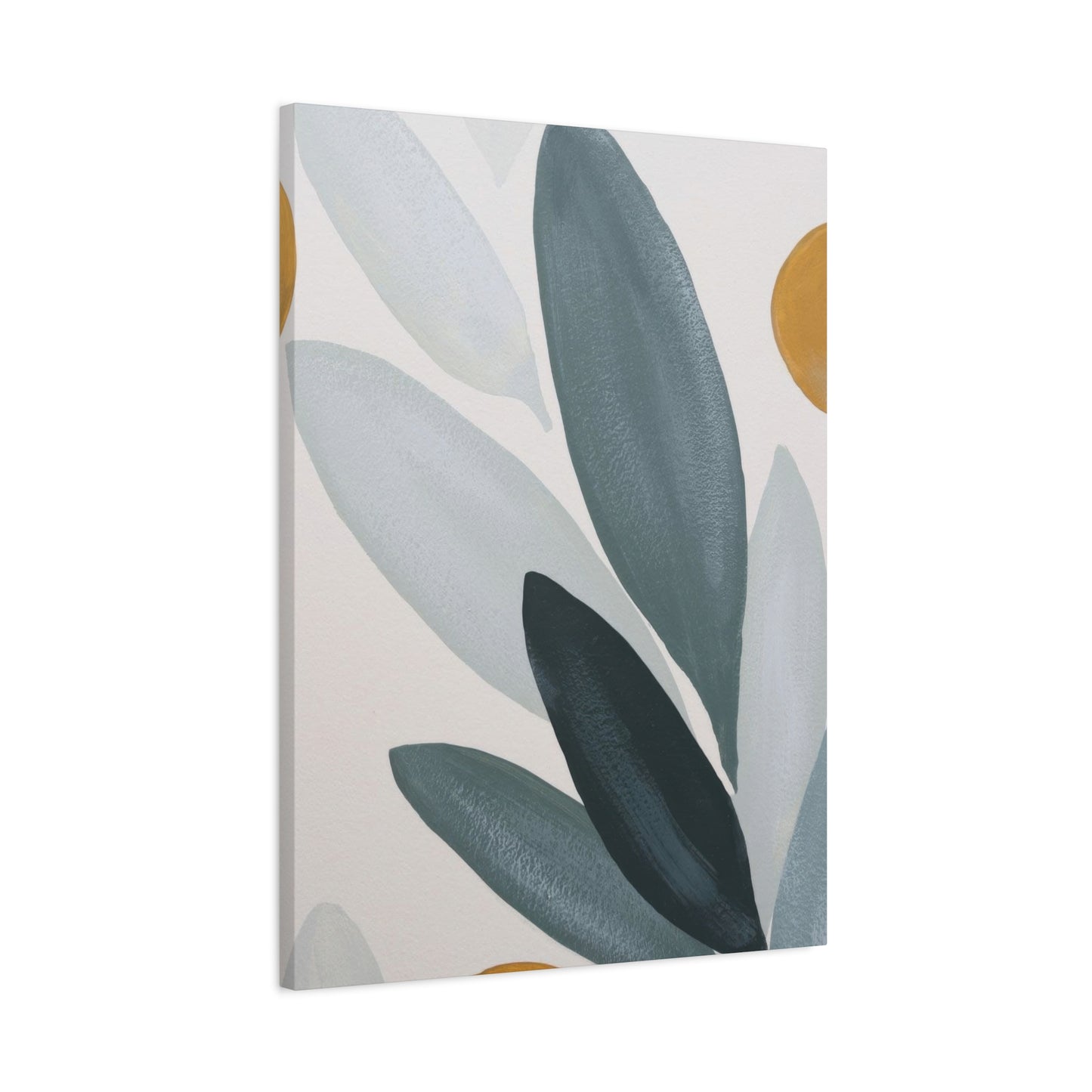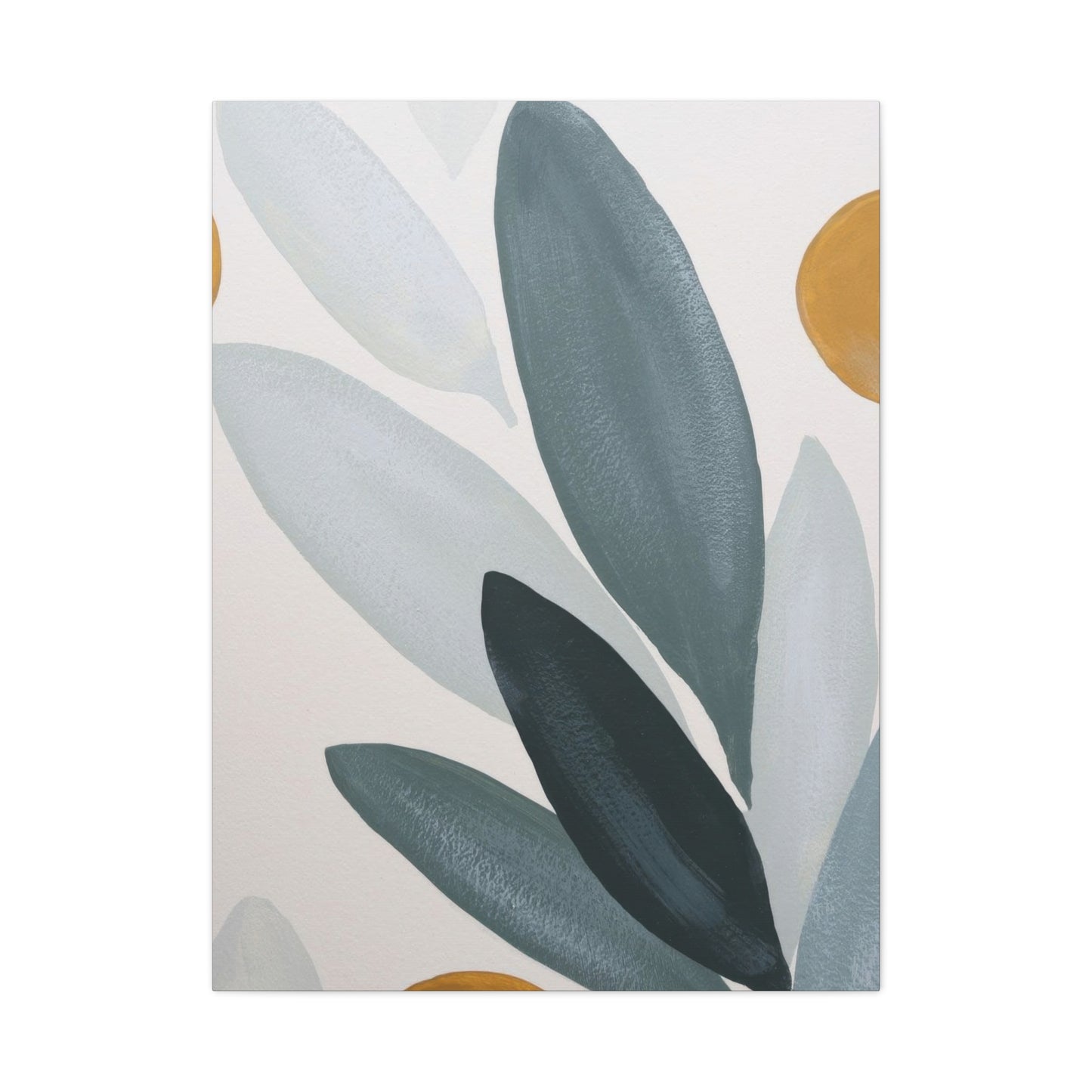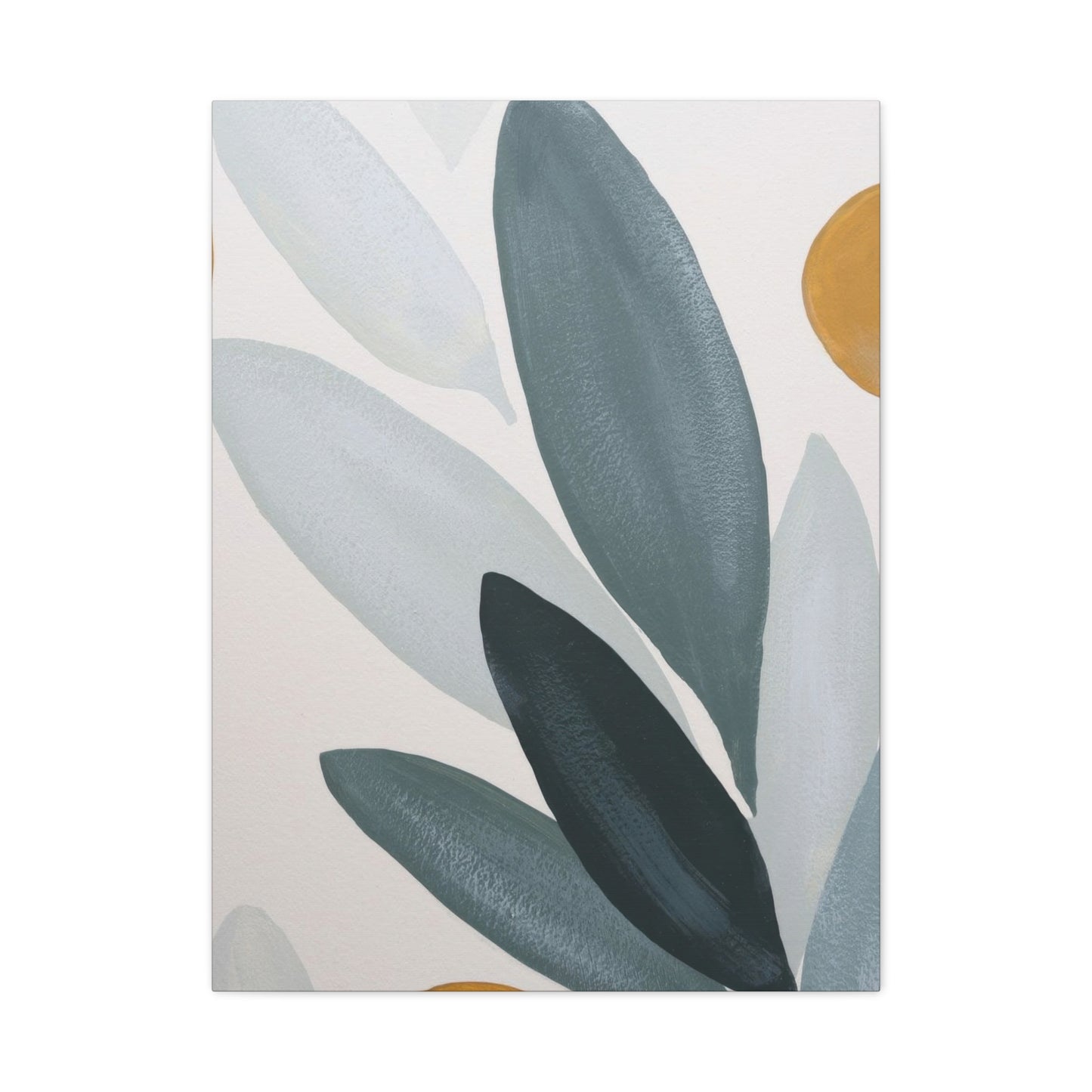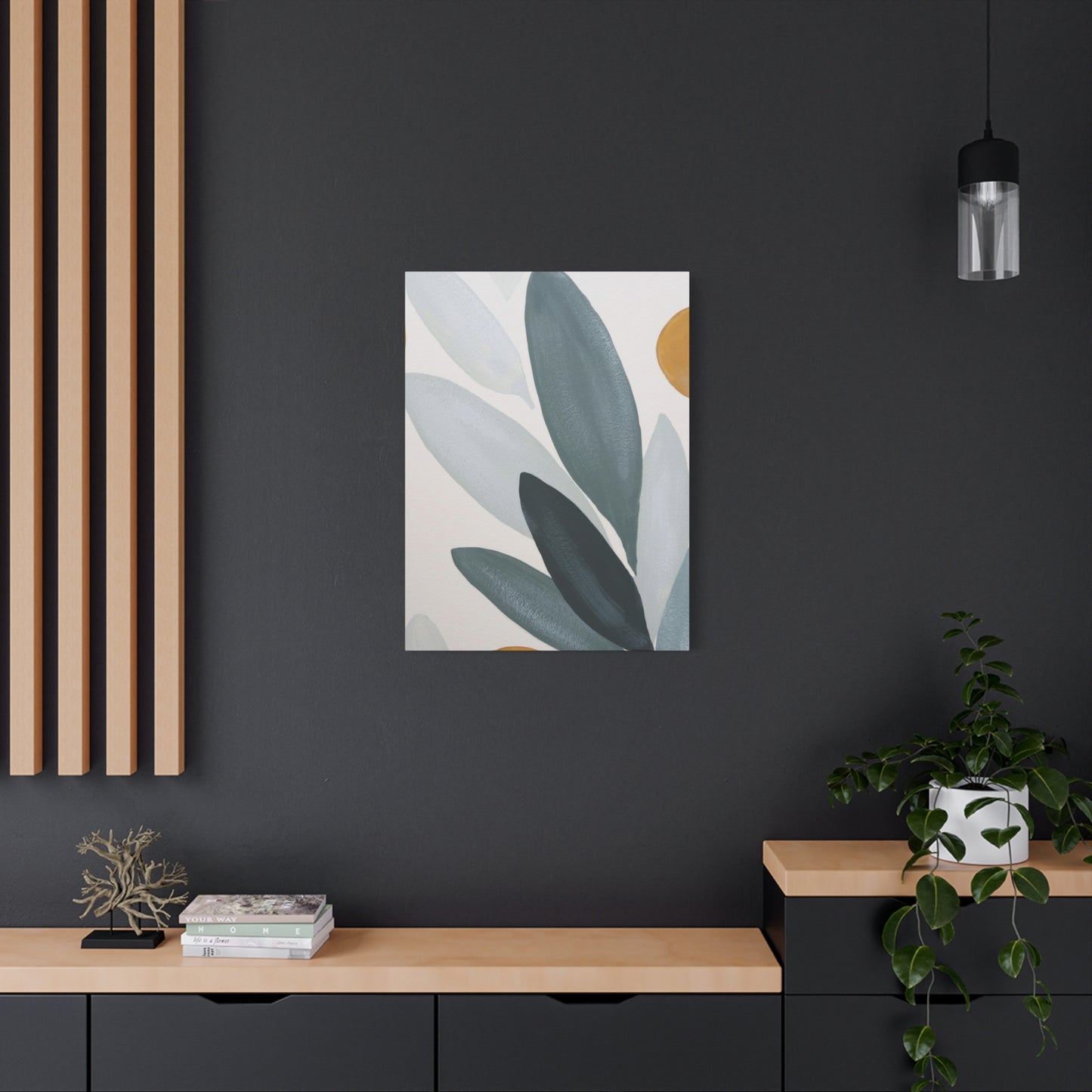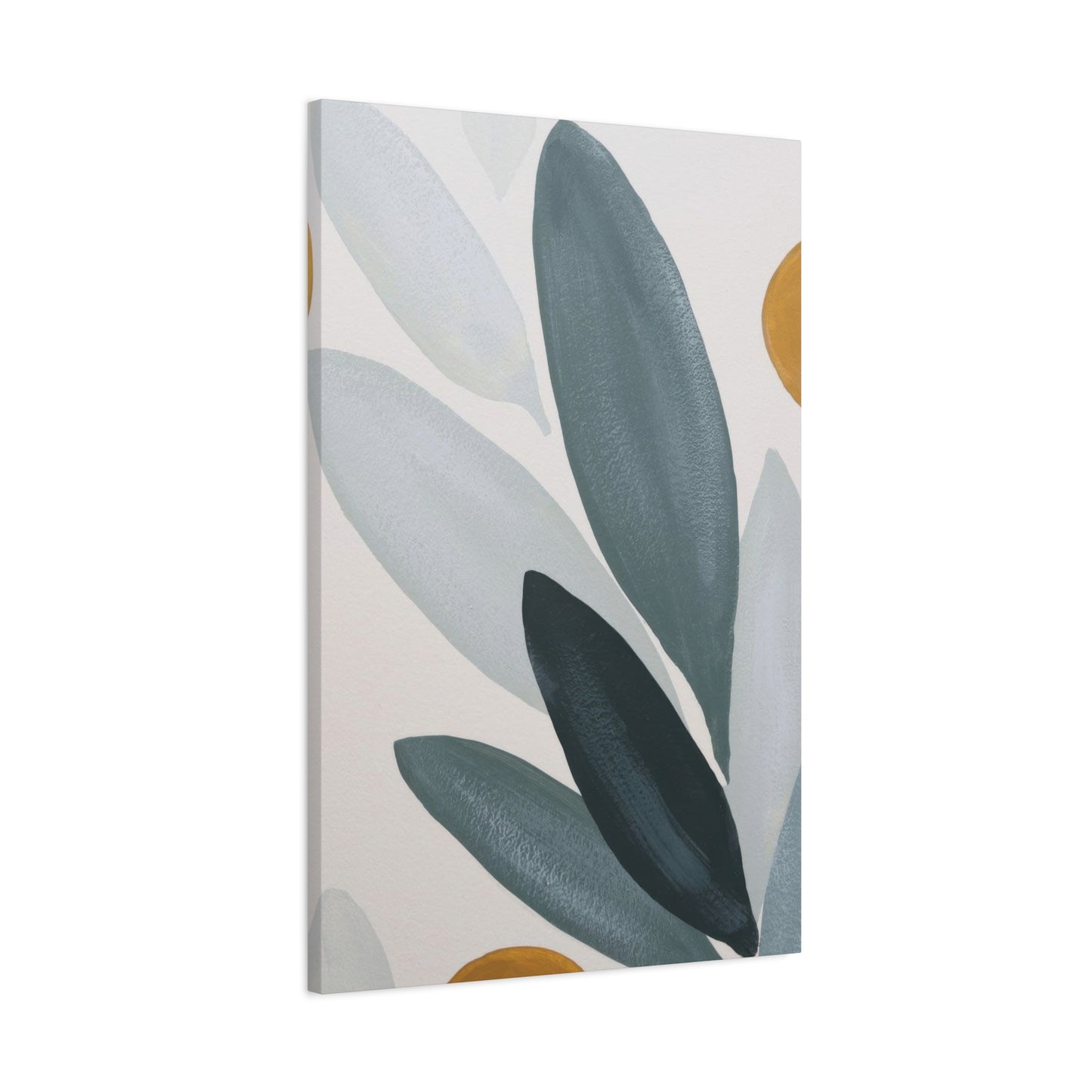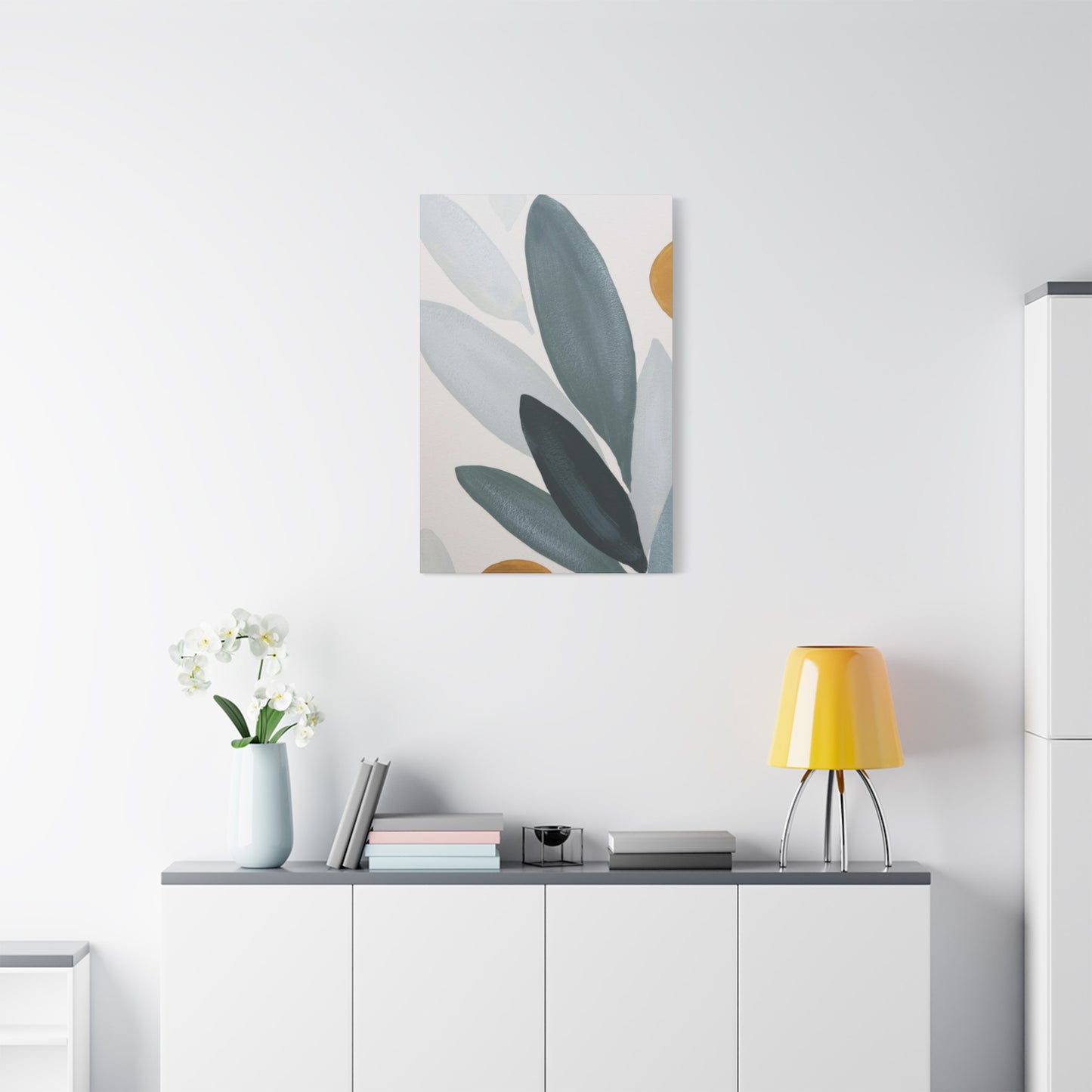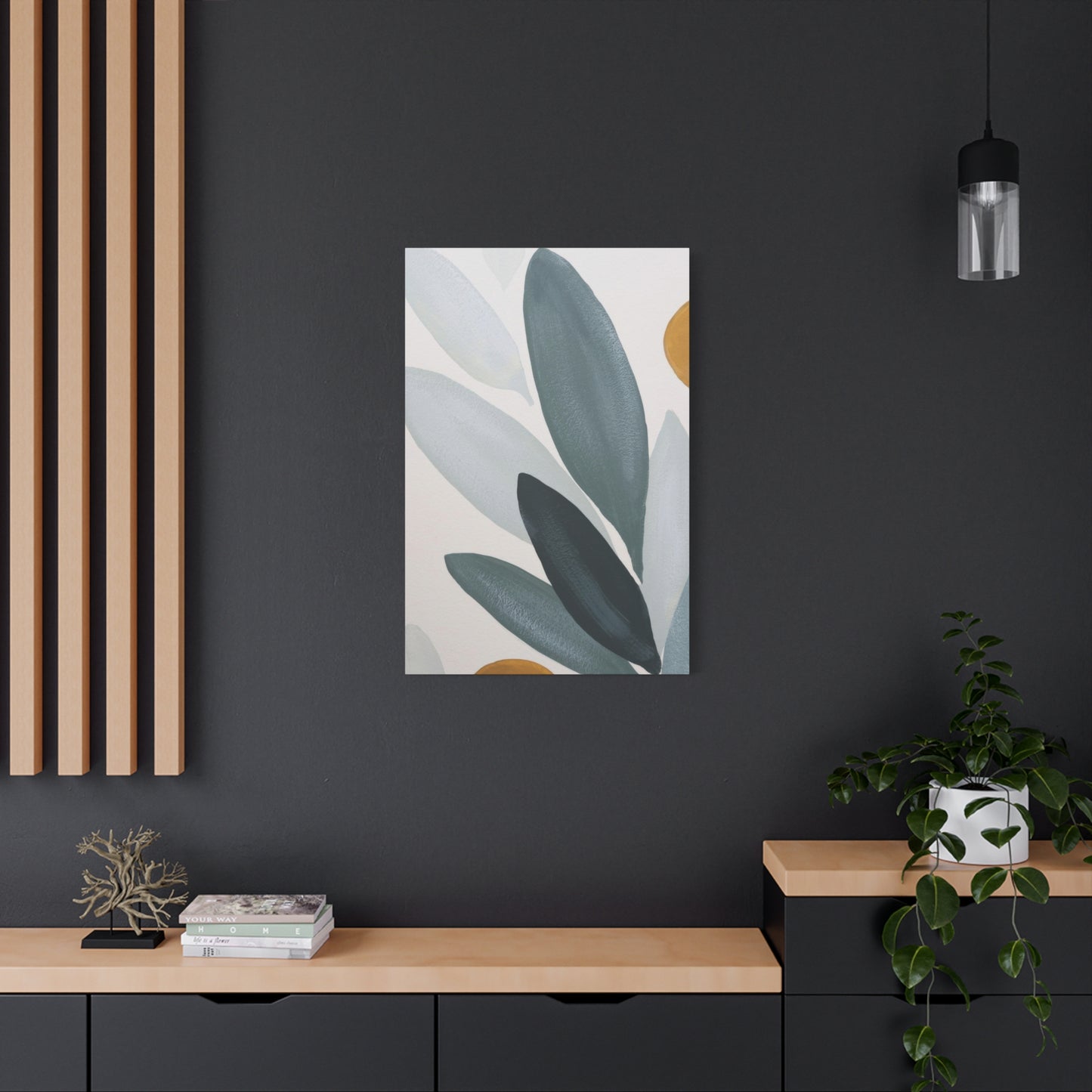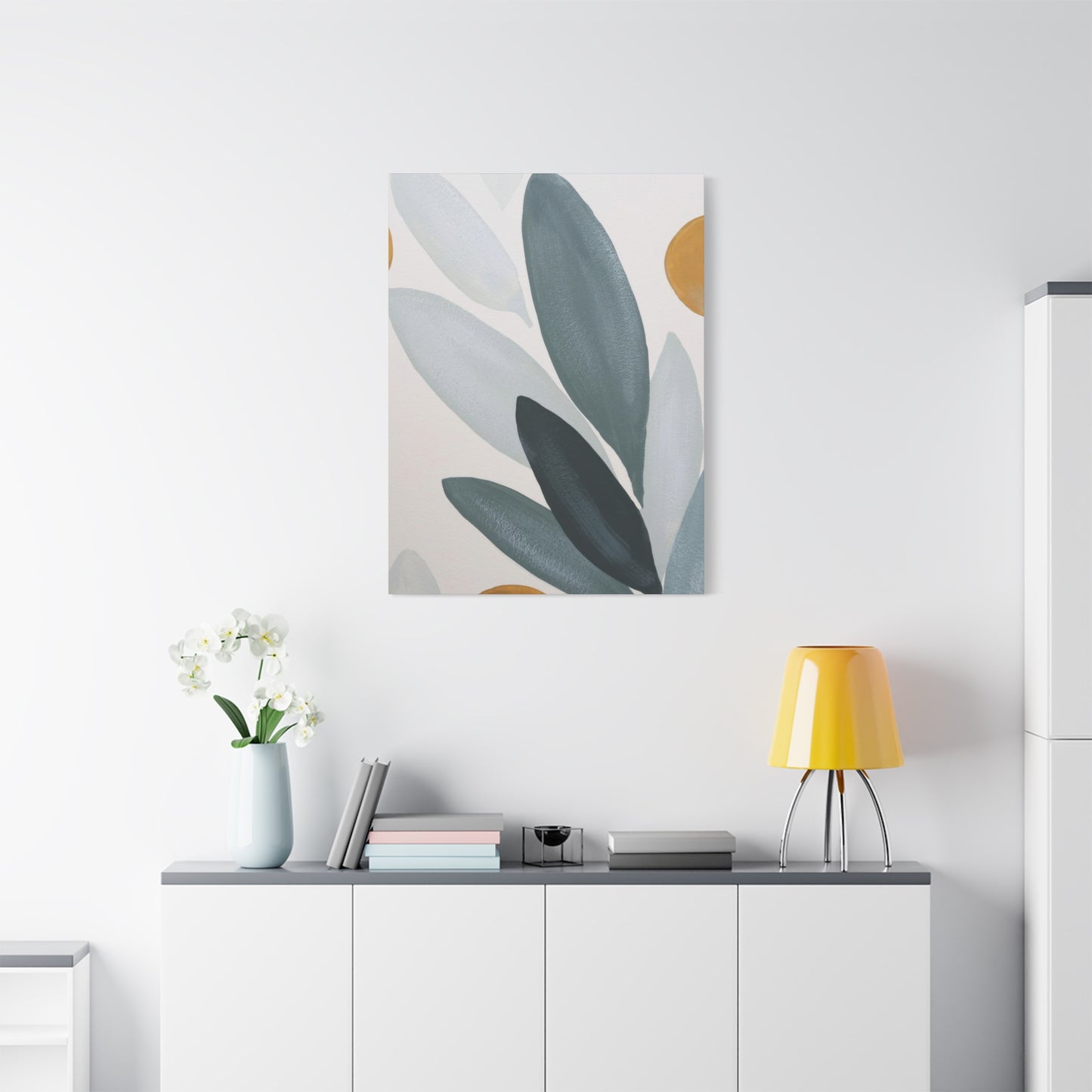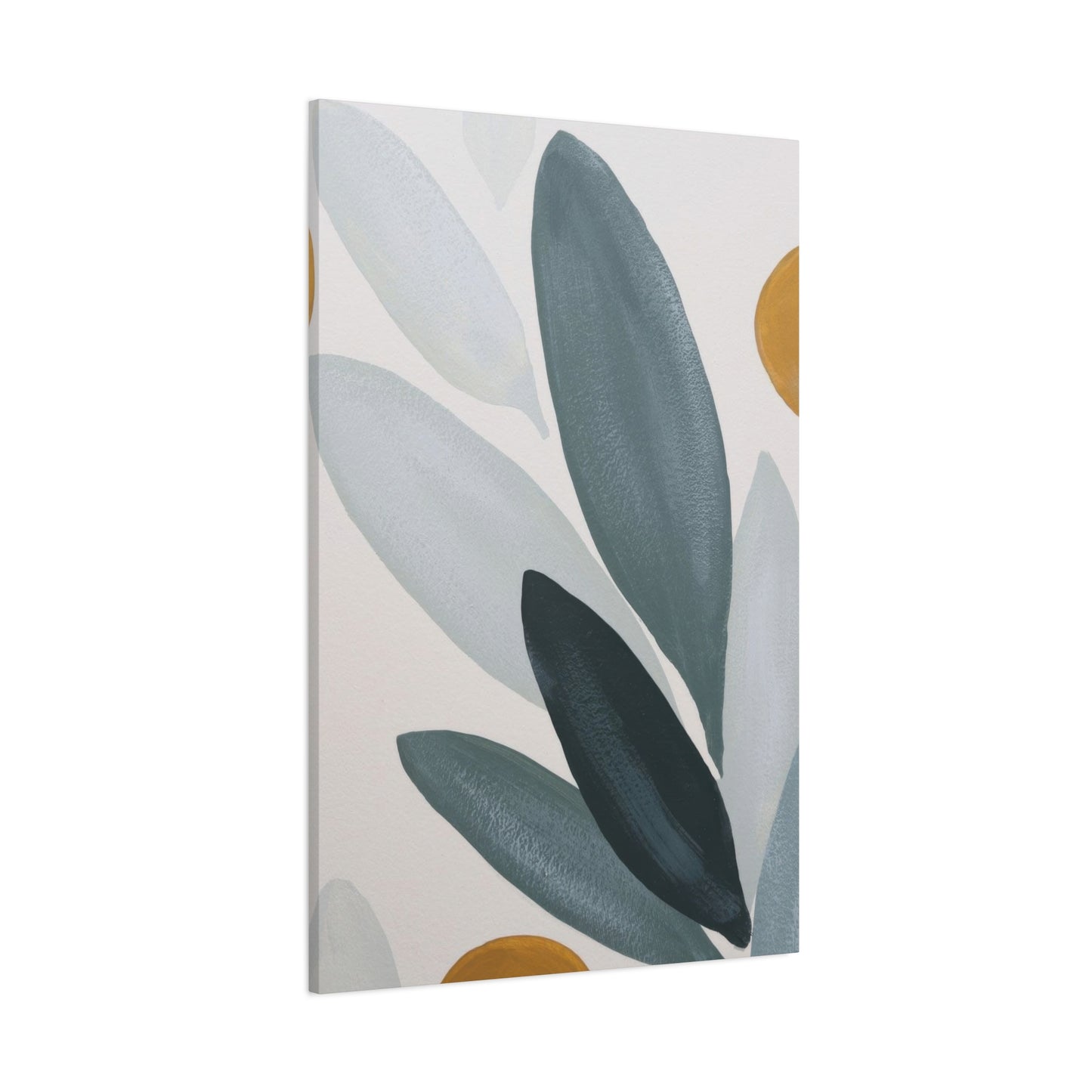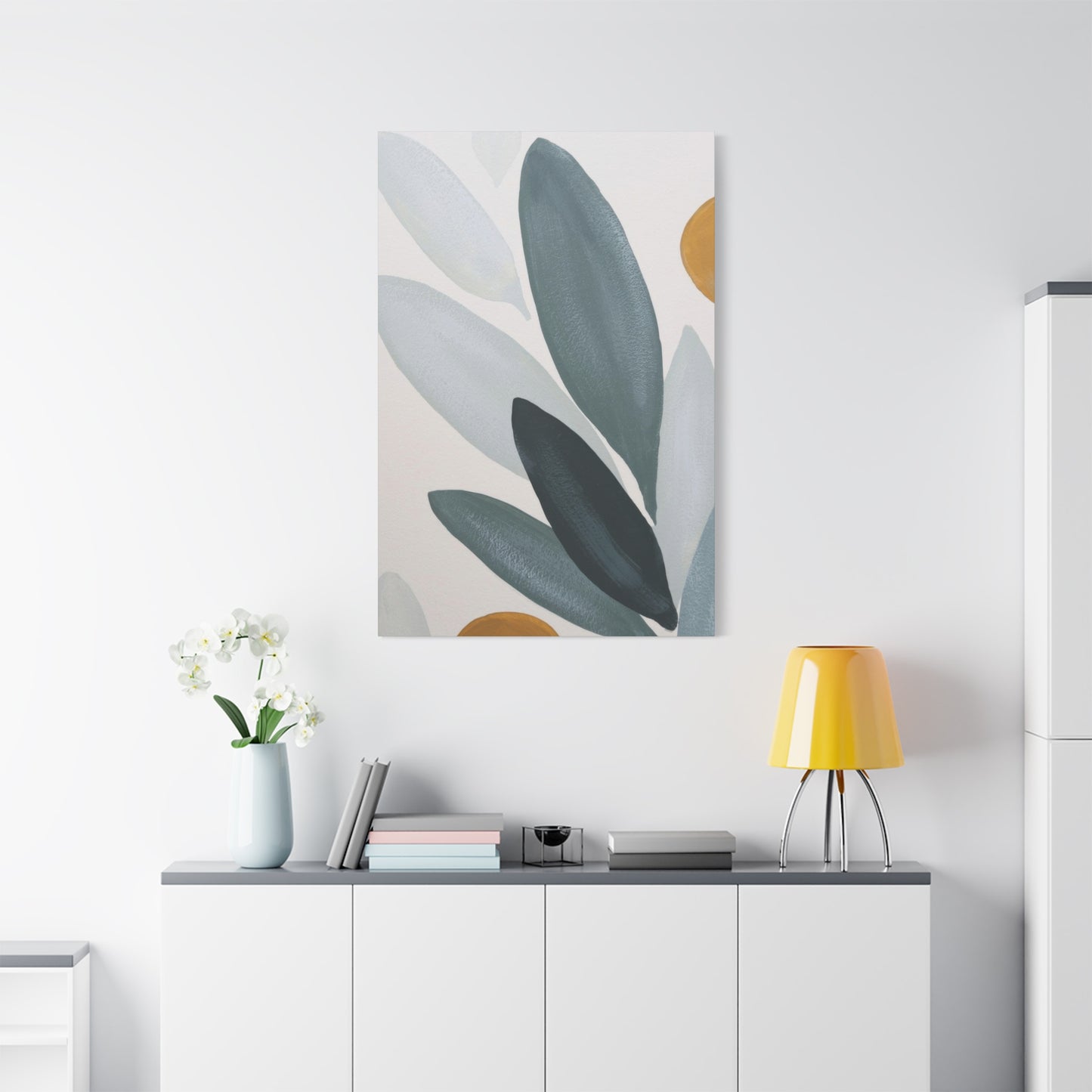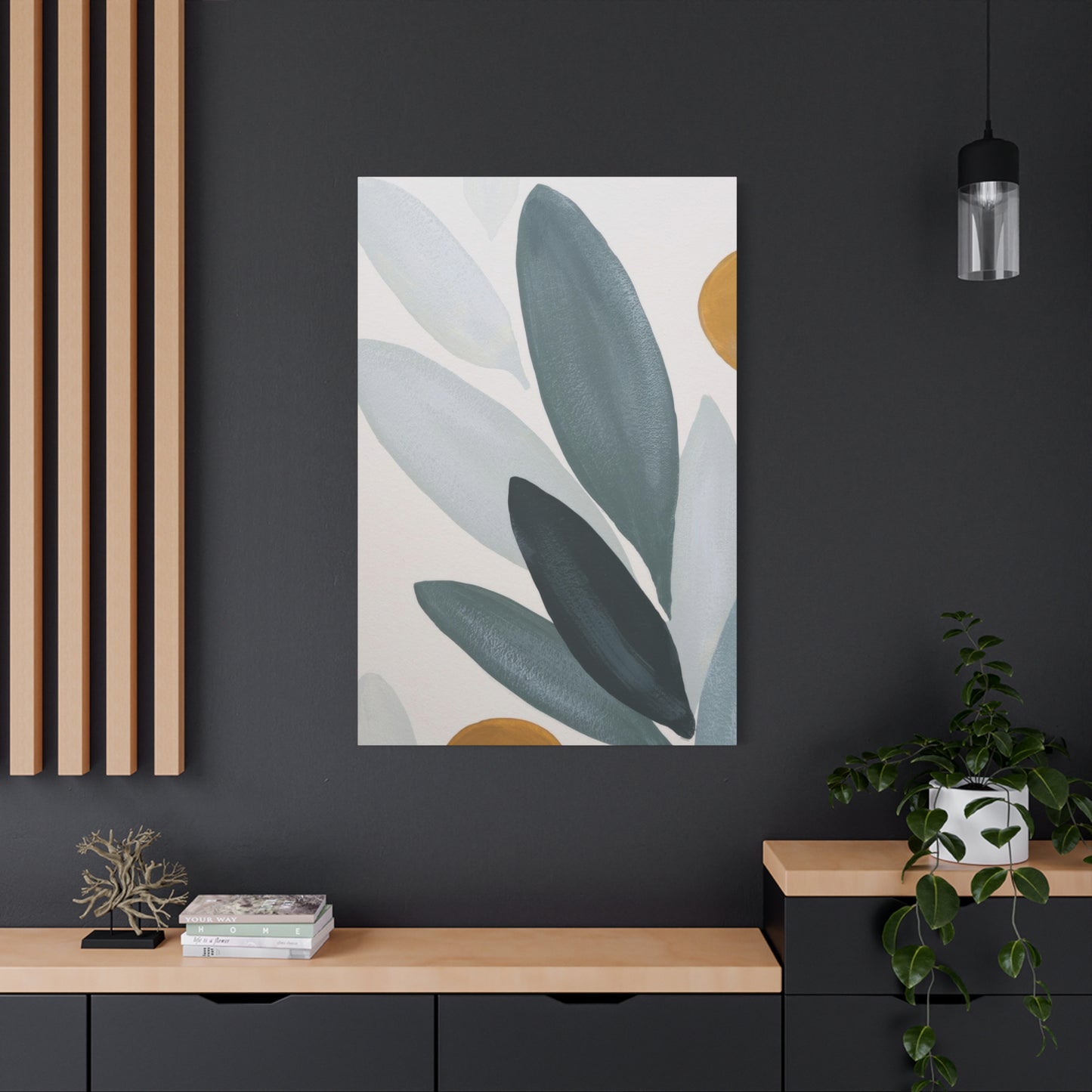Grey Leaves Deco Wall Art & Canvas Prints
Grey Leaves Deco Wall Art & Canvas Prints
Couldn't load pickup availability
Elevate Your Modern Living Spaces with the Subtle Beauty of Grey Leaves Deco Wall Art: A Perfect Blend of Timeless and Contemporary Design
The contemporary interior design landscape has witnessed a remarkable surge in botanical-inspired decorative elements that bring nature's serenship into our daily environments. Among these captivating choices, grey leaves deco wall art stands as a sophisticated statement piece that seamlessly bridges the gap between organic inspiration and refined aesthetic sensibilities. This particular style of ornamentation has captured the imagination of homeowners, designers, and decorating enthusiasts who seek to infuse their spaces with understated elegance while maintaining a connection to the natural world.
The allure of grey leaves deco wall art lies in its remarkable versatility and subtle sophistication. Unlike vibrant botanical prints that demand attention, these muted representations of foliage offer a calming presence that complements rather than overwhelms existing decor schemes. The neutral palette creates a harmonious backdrop that works effortlessly across diverse interior styles, from Scandinavian minimalism to industrial chic, from contemporary modernism to transitional eclecticism. This adaptability makes grey leaves deco wall art an invaluable asset for anyone seeking to refresh their living quarters without committing to bold color statements that might limit future design flexibility.
Exploring the Artistic Appeal Behind Monochromatic Botanical Representations
The fascination with monochromatic botanical imagery extends far beyond mere aesthetic preference. When artisans and creators translate nature's vibrant verdure into grayscale compositions, they strip away the distraction of color to reveal the fundamental architecture of plant life. This reductive approach highlights the intricate venation patterns, the delicate curves of leaf edges, and the subtle textural variations that often go unnoticed in their natural chromatic state. Grey leaves deco wall art celebrates these underlying structural elements, transforming familiar organic forms into abstract compositions that reward closer examination.
The decision to render botanical subjects in grey tones represents a deliberate artistic choice that carries significant visual impact. By removing color from the equation, these pieces direct the viewer's attention toward form, shadow, and spatial relationships. The interplay of light and dark within a single leaf creates dramatic contrast that adds depth and dimension to what might otherwise appear as flat surfaces. This tonal variation produces a sculptural quality that makes grey leaves deco wall art particularly effective in spaces where three-dimensional accessories are limited or where visual interest must come from two-dimensional surfaces.
Beyond the purely visual considerations, the psychological impact of grey botanical imagery deserves thoughtful consideration. The color grey itself occupies a unique position in the emotional spectrum, neither energizing nor sedating, but offering instead a sense of balanced neutrality. When combined with the inherently soothing associations of plant imagery, grey leaves deco wall art creates an environment conducive to relaxation, contemplation, and mental clarity. This makes such pieces particularly well-suited for bedrooms, meditation spaces, home offices, and other areas where a calm, focused atmosphere enhances the room's intended purpose.
Investigating Various Stylistic Approaches to Leaf-Themed Wall Ornamentation
The realm of grey leaves deco wall art encompasses an impressive array of artistic interpretations, each bringing distinct characteristics to interior environments. Photographic representations offer hyperrealistic detail, capturing every minute texture and subtle gradation of tone found in actual botanical specimens. These images often feature dramatic lighting that emphasizes the three-dimensional qualities of leaves, creating shadows and highlights that give the impression of tangible objects floating just beyond the picture plane. The precision of photographic grey leaves deco wall art appeals to those who appreciate naturalistic accuracy and the documentary quality of captured moments.
Watercolor interpretations present a softer, more ethereal alternative to photographic precision. Artists working in this medium create grey leaves deco wall art characterized by gentle washes of tone, bleeding edges, and translucent layering that suggests rather than declares the subject matter. These pieces carry an inherently romantic quality, evoking morning mists, gentle rains, and the ephemeral beauty of transitional seasons. The fluid, organic nature of watercolor techniques produces artwork that feels alive and dynamic, as though the leaves themselves might shift and sway with an invisible breeze.
Line drawings and ink illustrations offer yet another distinct approach to botanical wall ornamentation. These minimalist representations reduce leaves to their essential contours, using varying line weights and strategic negative space to suggest volume and form without relying on tonal modeling. The result is grey leaves deco wall art that reads as contemporary and sophisticated, with a graphic quality that makes these pieces particularly compatible with modern and transitional interior schemes. The economy of means in line-based botanical art creates visual breathing room that prevents spaces from feeling cluttered or overly decorated.
Abstract interpretations push botanical imagery into the realm of pure design, where recognizable leaf forms become starting points for creative exploration rather than subjects requiring faithful representation. Artists might fragment leaves, overlap them in unexpected ways, or distort their proportions to create compositions that prioritize visual rhythm and pattern over literal representation. This approach to grey leaves deco wall art appeals to those who appreciate the conceptual aspects of decoration and who seek pieces that spark conversation and invite multiple readings.
Examining Material Considerations for Botanical Wall Decorations
The substrate upon which grey leaves deco wall art appears significantly influences both its visual presentation and its practical durability. Canvas prints remain among the most popular choices, offering texture that adds subtle visual interest while maintaining affordability and lightweight convenience. The woven surface of canvas lends itself particularly well to botanical subjects, as the textile grain creates a sympathetic relationship with organic imagery. Gallery-wrapped canvas pieces, where the image continues around the edges of the stretcher frame, eliminate the need for traditional framing and contribute to a contemporary, streamlined appearance that many decorators prefer.
Metal prints represent a more unconventional but increasingly sought-after option for grey leaves deco wall art. The process of infusing dyes directly into specially coated aluminum sheets produces images with remarkable luminosity and depth. The reflective qualities of metal substrates interact with ambient light in ways that make botanical subjects appear to glow from within, creating an almost three-dimensional effect that changes as viewing angles shift throughout the day. The exceptional durability of metal prints makes them particularly suitable for high-humidity environments like bathrooms and kitchens, where paper-based alternatives might suffer deterioration.
Acrylic panels offer another premium option for presenting botanical imagery. When photographs or prints are face-mounted to clear acrylic, the result is grey leaves deco wall art with extraordinary clarity and a contemporary floating appearance. The glossy surface of acrylic enhances contrast and color saturation, making even monochromatic images appear more vibrant and engaging. The substantial weight and thickness of acrylic pieces contribute to a sense of quality and permanence that justifies their typically higher price points.
For those who appreciate traditional craftsmanship, framed prints under glass provide timeless elegance and excellent protection for valuable artwork. The choice of framing significantly impacts the overall presentation of grey leaves deco wall art. Simple, narrow frames in black, white, or natural wood allow the artwork itself to remain the focal point, while more substantial frames with decorative molding can transform botanical prints into formal statements suitable for traditional interiors. Mat boards in complementary shades create visual separation between the artwork and frame, adding sophistication and refinement to the overall composition.
Analyzing Strategic Placement for Maximum Visual Impact
The positioning of grey leaves deco wall art within a room dramatically affects both its visibility and its contribution to the overall spatial experience. Above a sofa or console table represents one of the most common and effective placement strategies, as this location naturally draws the eye and provides a focal point for seating arrangements. When hanging botanical artwork in this context, designers generally recommend positioning the center of the piece approximately sixty to sixty-five inches from the floor, allowing it to relate comfortably to both standing and seated viewers. The width of the artwork should ideally span two-thirds to three-quarters of the furniture width beneath it, creating visual balance and preventing the piece from appearing either too timid or too overwhelming.
Bedroom environments particularly benefit from the calming presence of grey leaves deco wall art positioned above the headboard or on the wall opposite the bed. This placement ensures the artwork remains visible from both reclining and standing positions, maximizing its decorative impact throughout daily routines. In smaller bedrooms where wall space is limited, a single large-scale botanical piece often proves more effective than multiple smaller works, as it creates a sense of expansiveness rather than visual fragmentation. The neutral tones of grey foliage imagery complement bedding in virtually any color palette, providing decorative continuity without creating conflicting focal points.
Dining areas offer excellent opportunities for displaying grey leaves deco wall art in ways that enhance the social and sensory experience of shared meals. Positioned on the wall most visible to seated guests, botanical artwork creates a pleasant visual anchor that facilitates conversation without becoming distracting. The organic subject matter of leaf imagery relates naturally to the nurturing associations of dining spaces, while the sophisticated grey palette elevates the environment beyond purely functional utility. In open-concept layouts where dining areas merge with adjacent spaces, grey leaves deco wall art can help define the zone visually without requiring physical barriers.
Entryways and hallways present unique challenges and opportunities for botanical wall decoration. These transitional spaces often lack natural light and feature awkward dimensions that make furniture arrangement difficult. Grey leaves deco wall art provides visual interest in these often-neglected areas while maintaining the neutral palette that prevents narrow spaces from feeling closed in or claustrophobic. In longer hallways, creating a gallery arrangement of multiple botanical pieces establishes visual rhythm and encourages movement through the space. The repetition of leaf motifs creates thematic unity while allowing for variation in size, orientation, and specific subject matter.
Delving Into Color Theory and Complementary Design Elements
Although grey leaves deco wall art features a fundamentally neutral palette, understanding its relationship to surrounding colors enhances its decorative effectiveness. The specific undertones present in grey botanical artwork significantly influence which colors harmonize most successfully. Cool greys with blue undertones create natural partnerships with other cool hues like seafoam, slate blue, lavender, and silver, producing interiors that feel crisp, clean, and refreshing. These cooler palettes work particularly well in sun-drenched rooms where the grey tones help balance abundant natural light without introducing warmth that might make spaces feel overheated.
Warm greys containing hints of brown, taupe, or greige undertones establish different chromatic relationships. These warmer neutrals harmonize beautifully with earth tones like terracotta, rust, ochre, and deep forest greens, creating interiors that feel grounded, organic, and welcoming. The subtle warmth in these grey botanical pieces prevents spaces from feeling sterile or impersonal, even when maintaining a predominantly neutral color scheme. This approach proves particularly effective in rooms with cooler natural light exposure, where warm grey leaves deco wall art can compensate for the absence of direct sunlight.
The interaction between grey botanical artwork and metallics deserves particular attention, as these combinations create sophisticated, contemporary interiors with refined visual appeal. Silver and chrome accessories echo the cool neutrality of grey leaves deco wall art, producing cohesive schemes that feel polished and intentional. Gold and brass accents create more dramatic contrast, with the warmth of yellow metals playing against the coolness of grey tones to generate visual interest without overwhelming neutral foundations. Rose gold and copper represent middle ground options, offering warmth without the intensity of yellow gold while maintaining the luxurious associations of metallic finishes.
Textural variety amplifies the impact of grey leaves deco wall art by creating sensory richness that engages multiple perceptual systems simultaneously. When two-dimensional botanical imagery appears alongside three-dimensional elements with varied surface qualities, the overall environment becomes more engaging and less monotonous. Smooth leather upholstery, nubby linen textiles, rough-hewn wood surfaces, sleek glass accents, and plush area rugs each contribute distinct tactile qualities that prevent neutral spaces from reading as flat or boring. The organic subject matter of leaf imagery naturally complements these varied textures, particularly those derived from natural materials.
Investigating Scale and Proportion in Botanical Wall Arrangements
The physical dimensions of grey leaves deco wall art dramatically affect its visual impact and its relationship to surrounding architectural elements. Oversized pieces making bold statements work exceptionally well in spacious rooms with high ceilings and generous wall expanses. These large-scale botanical works function as architectural features themselves, commanding attention and establishing clear focal points that organize visual hierarchies within rooms. A single massive leaf image or a tightly cropped botanical detail blown up to enormous proportions creates contemporary drama that elevates everyday interiors into memorable spaces.
Medium-sized pieces offer versatility that makes them suitable for the widest range of residential settings. Grey leaves deco wall art in moderate dimensions—typically ranging from twenty-four to forty inches in either direction—provides substantial visual presence without overwhelming average-sized rooms. These proportions allow for easy repositioning and rehanging as tastes evolve and living situations change. Multiple medium-sized pieces can be arranged in numerous configurations, offering decorating flexibility that single large works cannot match. The ability to reconfigure botanical groupings prevents decorative stagnation and keeps interiors feeling fresh across seasons and years.
Smaller botanical prints excel in intimate settings and as components of larger gallery wall compositions. Dimensions ranging from eight to sixteen inches create opportunities for layered, collected-over-time aesthetics that larger pieces cannot achieve. These smaller-scale works of grey leaves deco wall art prove particularly effective in spaces where multiple focal points compete for attention or where architectural features like windows, doors, and built-in millwork fragment available wall surfaces into irregular segments. The reduced scale also makes these pieces more affordable and accessible, allowing decorators to acquire multiple coordinating works that create visual cohesion through repetition and variation.
Gallery wall arrangements represent one of the most popular and effective ways to display collections of grey leaves deco wall art. These curated groupings allow for mixing different sizes, orientations, and framing styles while maintaining thematic unity through shared subject matter and tonal palette. Successful gallery walls balance asymmetry with visual weight distribution, ensuring that although pieces may vary in size and placement, the overall composition feels intentional rather than haphazard. Many designers recommend arranging pieces on the floor first, photographing various configurations, and selecting the most visually pleasing arrangement before committing to wall installation.
Understanding Framing Options and Presentation Styles
The manner in which grey leaves deco wall art is framed and presented significantly influences its aesthetic character and compatibility with various interior styles. Floating frames, which create narrow borders around canvas edges, offer contemporary refinement that works particularly well with modern and transitional decor schemes. These frames add definition and finished appearance without the visual weight of traditional picture frames, allowing the botanical imagery to remain the primary focus. Available in various finishes including black, white, natural wood, and metallics, floating frames provide subtle customization opportunities that help botanical artwork relate more successfully to existing furnishings and architectural details.
Mat boards introduce additional visual sophistication and protect artwork by creating separation between the image and the glass. When selecting mat colors for grey leaves deco wall art, designers typically recommend coordinating with either the lightest or darkest tones within the artwork itself, creating harmonious relationships that enhance rather than compete with the botanical imagery. Double matting, which combines two mat boards with the inner mat slightly narrower than the outer mat, adds depth and luxury that elevates even modestly priced prints into gallery-worthy presentations. The added dimension created by multiple mat layers produces subtle shadows that emphasize the three-dimensional quality of framed works.
Frameless mounting systems offer ultra-contemporary alternatives to traditional presentation methods. These systems typically rely on standoffs, cleats, or hanging wires that allow grey leaves deco wall art to float away from the wall surface, creating dramatic shadow lines and emphasizing the physical presence of the artwork itself. The minimalist aesthetic of frameless mounting aligns perfectly with Scandinavian, modern, and industrial interior styles where visual simplicity and honest materials take precedence over decorative embellishment. The exposed edges of artwork mounted without frames become design elements themselves, requiring careful selection of substrate materials and edge finishing treatments.
Shadow box frames introduce additional spatial depth that transforms flat grey leaves deco wall art into more sculptural presentations. The gap between the artwork and the glass or acrylic glazing creates actual three-dimensional space that produces complex shadow patterns as light angles change throughout the day. This presentation style works particularly well with dimensional botanical elements like pressed leaves or botanical specimens, but also adds drama and importance to two-dimensional prints and photographs. The increased depth of shadow box frames requires more substantial wall space and greater projection from the wall surface, considerations that influence placement decisions and compatibility with different room configurations.
Examining Seasonal Rotation and Refresh Strategies
Although grey leaves deco wall art maintains year-round relevance thanks to its neutral palette and organic subject matter, thoughtful seasonal rotation can keep interiors feeling fresh and responsive to changing conditions. During warmer months, selecting botanical pieces that emphasize lighter grey tones and more delicate, airy leaf structures creates visual coolness that complements seasonal needs. Images featuring silvery eucalyptus, pale dusty miller, or wispy fern fronds communicate lightness and breeziness that aligns with summer living. Pairing these lighter botanical works with white or pale wood frames enhances the seasonal effect without requiring complete room makeovers.
Cooler months invite rotation toward darker, more substantial grey botanical imagery. Leaves with prominent venation, bold silhouettes, and deeper charcoal tones create visual warmth and coziness appropriate for autumn and winter living. Tropical leaves like monstera or fiddle leaf fig, rendered in rich medium to dark greys, maintain sophistication while adding the visual weight that makes cold-weather interiors feel more enveloping and protective. Pairing these darker botanical works with substantial frames in deep woods or matte black finishes reinforces the seasonal shift without requiring furniture replacement or major renovation.
Transitional periods between seasons offer opportunities to showcase grey leaves deco wall art that bridges stylistic gaps. Images featuring mixed leaf types at various stages of maturity or works that incorporate multiple grey tones from light to dark accommodate both outgoing and incoming seasonal palettes. These versatile pieces ease the visual transition between dramatically different seasonal schemes, preventing jarring shifts that can make spaces feel disjointed or poorly planned. The neutral nature of grey botanical imagery makes it uniquely suited to these transitional periods, as it complements both warm and cool accent colors without favoring either extreme.
Beyond seasonal considerations, periodic rotation of grey leaves deco wall art prevents visual fatigue and decorative stagnation. Even beloved pieces can begin to fade into invisibility when viewed daily for extended periods, their visual impact diminishing through overfamiliarity. Rotating botanical artwork between rooms or temporarily storing pieces creates opportunities for rediscovery and renewed appreciation. When previously displayed works return to rotation after months of absence, they often feel fresh and newly inspiring, as though encountering them for the first time. This strategy maximizes the value of botanical artwork collections while maintaining evolving, dynamic interiors that resist decorative obsolescence.
Analyzing Price Points and Value Considerations
The market for grey leaves deco wall art spans an enormous range of price points, from budget-friendly mass-produced prints to museum-quality original works commanding significant investment. Mass-market retailers offer botanical prints in standard dimensions with simple framing at prices that make decorative refreshment accessible to nearly any budget. These affordable options allow for frequent rotation, experimentation with different placements, and risk-free exploration of personal style preferences. While materials and craftsmanship may not match premium alternatives, these accessible pieces serve important roles in making attractive, nature-inspired decoration available to broad audiences.
Mid-range botanical artwork typically features superior materials, more sophisticated printing processes, and better framing options while remaining within reasonable household decoration budgets. Giclee prints on archival papers or canvas, protected by UV-resistant glazing and presented in well-constructed frames, occupy this middle territory. These pieces offer genuine longevity and visual quality that justifies higher initial investment while avoiding the extreme expense of original or limited-edition works. For most residential decorating needs, grey leaves deco wall art in this middle price range represents optimal balance between quality, affordability, and aesthetic impact.
Premium and luxury botanical artwork encompasses limited-edition prints, works by recognized artists, and original pieces created through labor-intensive processes. Hand-pulled botanical prints, original watercolors, and photographic works printed in small editions and signed by artists command premium pricing that reflects their scarcity and artistic merit. These investment-grade pieces of grey leaves deco wall art appreciate over time when selected carefully, potentially offering financial returns in addition to aesthetic pleasure. The decision to allocate significant resources to botanical artwork should consider both immediate decorative needs and longer-term collecting goals, particularly when acquiring works by emerging artists whose reputations may grow substantially over time.
Custom-commissioned grey leaves deco wall art represents the pinnacle of personalized decoration, allowing patrons to specify exact dimensions, color variations, subject matter, and presentation styles that address unique spatial requirements and aesthetic preferences. Commissioned works ensure perfect compatibility with existing interiors while creating one-of-a-kind pieces that cannot be duplicated. The collaborative process between patron and artist often proves deeply satisfying, transforming artwork acquisition from transactional purchase into meaningful creative partnership. Although commissioned botanical pieces require substantial financial commitment and extended production timelines, the resulting works perfectly suited to specific spaces and tastes often justify the additional investment.
Exploring Maintenance Requirements for Longevity
Proper maintenance extends the life and preserves the appearance of grey leaves deco wall art, protecting decorative investments while ensuring continued aesthetic contribution. Dust accumulation represents the most common threat to botanical artwork, as airborne particles settle on surfaces and within frame crevices. Regular gentle cleaning using soft, dry microfiber cloths removes surface dust without introducing moisture or chemicals that might damage prints or frames. For glass or acrylic glazing, occasional use of appropriate cleaning solutions applied to cleaning cloths rather than directly on surfaces prevents drips that could seep behind glazing and damage artwork.
Light exposure poses significant risks to botanical prints, particularly those created with dye-based inks that fade when subjected to prolonged ultraviolet radiation. Positioning grey leaves deco wall art away from direct sunlight, particularly intense afternoon western exposure, dramatically extends color stability and prevents premature fading. In rooms where sunlight exposure cannot be avoided, UV-filtering glazing provides protective barriers that block harmful radiation while maintaining transparency and visual clarity. Window treatments like cellular shades, curtains, or UV-filtering films offer additional protection during peak sun exposure hours without requiring permanent repositioning of artwork.
Humidity fluctuations threaten paper-based botanical artwork through expansion and contraction cycles that cause warping, buckling, and deterioration of adhesives. Maintaining relatively stable indoor humidity levels between forty and fifty percent protects grey leaves deco wall art from moisture-related damage. In consistently humid environments like bathrooms or coastal homes, selecting metal, acrylic, or well-sealed canvas pieces provides better durability than paper prints under glass. Dehumidifiers in problematic areas help control moisture levels, protecting not only botanical artwork but also furniture, books, and other moisture-sensitive household items.
Periodic inspection of grey leaves deco wall art allows early detection of potential problems before they become serious conservation challenges. Checking for signs of insect activity, particularly in frames constructed from natural materials, prevents infestations that can destroy artwork and spread to other household items. Examining hanging hardware ensures secure mounting that prevents unexpected falls and resulting damage. Inspecting the backs of frames for dust accumulation, water stains, or other signs of environmental issues provides early warning of conditions requiring remediation. These simple preventive measures take minimal time but provide substantial protection for decorative investments.
Investigating Botanical Subject Matter Beyond Traditional Leaves
While leaf imagery dominates the grey leaves deco wall art category, expanding subject matter to include other botanical elements creates opportunities for visual variety while maintaining thematic consistency. Seed heads and dried botanical specimens offer sculptural forms and intricate surface textures that translate beautifully into monochromatic imagery. The geometric patterns of sunflower seed arrangements, the delicate filaments of dandelion puffs, and the complex architecture of lotus seed pods provide striking visual alternatives to conventional leaf forms. These subjects maintain connections to plant life while introducing different shapes and compositional possibilities.
Bark textures and wood grain patterns represent another compelling direction for grey botanical wall decoration. The intricate patterns created by tree bark, from the smooth grey-white surfaces of birch to the deeply furrowed bark of ancient oaks, offer endless visual interest and symbolic connections to strength, longevity, and rootedness. Macro photographs highlighting bark details create abstract compositions that read as contemporary art while maintaining organic origins. These pieces appeal particularly to those who appreciate textural complexity and pattern-based decoration.
Botanical cross-sections reveal hidden internal structures that most observers never encounter in daily life. Slicing through stems, seed pods, and fruit reveals geometric patterns, cellular arrangements, and organizational systems that showcase nature's engineering sophistication. When rendered in grey tones, these cross-sectional views of grey leaves deco wall art take on scientific and architectural qualities that appeal to analytical minds while maintaining aesthetic beauty. The unexpected perspectives offered by cross-sectional imagery create conversation pieces that invite closer examination and contemplation.
Negative space and silhouette approaches reduce botanical subjects to their most essential outlines, creating minimalist compositions that emphasize form over detail. Crisp white backgrounds throw grey leaf silhouettes into sharp relief, producing graphic images with contemporary appeal. These simplified representations work particularly well in modern interiors where visual complexity exists in furniture forms, textile patterns, or architectural details. The restraint of silhouette-based grey leaves deco wall art provides necessary visual breathing room in busy spaces while maintaining botanical themes.
Examining the Interplay Between Natural and Artificial Light
The illumination conditions under which grey leaves deco wall art is viewed dramatically affect its appearance and impact. Natural daylight, particularly the soft, indirect light entering from northern exposures, reveals subtle tonal variations and textural details that harsher lighting conditions obscure. The cool color temperature of daylight complements the inherent neutrality of grey botanical imagery, creating harmonious visual environments that feel balanced and restful. Rooms receiving abundant natural light showcase grey leaves deco wall art at its finest, with shifting sun angles throughout the day creating ever-changing shadow patterns and highlights that prevent visual monotony.
Artificial lighting schemes require careful consideration to properly illuminate botanical artwork without creating glare, distortion, or inappropriate color casts. Track lighting and adjustable picture lights offer focused illumination that highlights specific artworks while allowing customization of light direction and intensity. Positioning lights at approximately thirty-degree angles from the wall surface minimizes reflections on glazing while creating subtle shadows that emphasize texture and dimension. Selecting bulbs with high color rendering index ratings ensures that grey tones appear accurate and nuanced rather than muddy or distorted by poor-quality light sources.
Ambient lighting establishes overall room brightness and significantly influences how grey leaves deco wall art relates to its surroundings. In rooms with warm-toned general lighting, grey botanical pieces may read as cooler and more recessive, creating pleasant contrast but potentially appearing somewhat detached from the overall environment. Cool-toned ambient lighting enhances the inherent qualities of grey imagery, creating cohesive schemes where botanical artwork feels integrated rather than added. Layered lighting approaches combining ambient, task, and accent lighting offer maximum flexibility, allowing adjustment of lighting conditions to suit different activities and moods.
Backlighting represents an unconventional but increasingly popular approach to illuminating translucent botanical artwork. When grey leaves deco wall art is printed on semi-transparent materials or created as backlit panels, internal illumination transforms static images into glowing focal points. The transmitted light emphasizes the internal structure of leaves, highlighting venation patterns and creating luminous effects impossible with conventional surface lighting. This dramatic presentation style works particularly well in contemporary interiors and creates memorable visual impact, though it requires specialized materials and mounting systems.
Understanding the Relationship Between Indoor Plants and Botanical Artwork
The decision to combine living plants with grey leaves deco wall art creates layered, nature-rich interiors that appeal to multiple senses while reinforcing biophilic design principles. Real plants introduce living color, movement, and organic growth patterns that complement the static, monochromatic representations of botanical artwork. The three-dimensional reality of actual foliage creates fascinating dialogue with two-dimensional representations, each emphasizing different aspects of plant beauty. This combination proves particularly effective in spaces where abundant plant life would be impractical due to light limitations, maintenance concerns, or space constraints.
Strategic placement of living plants in relation to grey botanical artwork enhances both elements through thoughtful juxtaposition. Positioning potted plants on surfaces below or adjacent to botanical wall art creates visual connections that guide the eye and establish thematic unity. Selecting plant varieties whose leaf shapes echo or contrast with those depicted in artwork creates intentional relationships that demonstrate decorating sophistication. For example, pairing grey fiddle leaf fig imagery with actual rubber plants introduces family relationships while acknowledging practical limitations that might make growing actual fiddle leaf figs challenging in particular environments.
The maintenance requirements of living plants offer both challenges and opportunities in relation to botanical artwork. While real plants demand regular watering, pruning, and monitoring, they provide dynamic visual interest that static artwork cannot match. Combining low-maintenance plant varieties with grey leaves deco wall art achieves balance between living and represented nature, satisfying desires for botanical presence without imposing overwhelming care burdens. Snake plants, pothos, and ZZ plants tolerate neglect and difficult conditions while contributing authentic botanical elements that validate and extend the themes introduced by wall art.
Color relationships between living plants and monochromatic botanical artwork deserve thoughtful consideration. The vibrant greens of healthy foliage create striking contrast against grey leaf representations, emphasizing the artistic choice to present botanical subjects in neutral tones. This contrast can energize spaces and prevent all-grey schemes from appearing lifeless or dreary. Alternatively, selecting plants with naturally grey-toned foliage like certain succulents, dusty miller, or silvery herbs creates tonal harmony that unifies living and represented botanical elements. This cohesive approach produces calming, sophisticated interiors where natural and artistic elements reinforce rather than compete with each other.
Analyzing DIY Creation of Botanical Wall Decoration
The creation of original grey leaves deco wall art offers creative fulfillment and perfect customization while potentially reducing expenses associated with purchasing completed works. Pressing and preserving actual leaves represents one of the most accessible entry points for DIY botanical art creation. Collecting leaves with interesting shapes and intact structures, pressing them between heavy books or in dedicated plant presses, and mounting them on neutral backgrounds creates authentic botanical specimens suitable for framing. Applying grey wash or using black-and-white photocopying transforms naturally colored leaves into monochromatic subjects matching desired aesthetic parameters.
Photography enthusiasts can create custom grey leaves deco wall art using smartphone cameras or dedicated photography equipment. Collecting interesting leaves, arranging them on contrasting backgrounds, and photographing them under flattering light conditions produces raw material for botanical artwork. Converting color images to black-and-white through photo editing software allows control over contrast, brightness, and tonal relationships. Experimenting with different conversion methods including channel mixing, desaturation, and selective color removal produces varied results from identical source material, allowing selection of the most visually appealing interpretations.
Drawing and illustration techniques offer completely original approaches to botanical wall decoration. Sketching leaves from life or reference photographs develops observational skills while producing unique artworks reflecting personal artistic sensibilities. Working in graphite, charcoal, or ink naturally produces monochromatic results suitable for grey botanical themes. The handmade quality of drawn artwork adds warmth and personality often missing from photographic reproductions, while imperfections and artistic idiosyncrasies contribute character that mass-produced pieces cannot replicate. Framing original drawings elevates them to finished artworks worthy of prominent display.
Digital illustration software provides powerful tools for creating sophisticated grey leaves deco wall art without traditional artistic skills. Vector drawing programs allow precise manipulation of shapes, gradients, and transparency to build botanical compositions with professional polish. Tablet-based drawing applications with pressure-sensitive styluses enable natural drawing gestures that produce organic, hand-drawn qualities despite digital origins. The ability to endlessly revise, resize, and recolor digital artwork without degradation offers flexibility impossible with traditional media, while high-resolution output ensures professional presentation quality when prints are created.
Exploring Cultural and Symbolic Meanings in Botanical Imagery
Leaf imagery carries rich symbolic associations across cultures and throughout history, adding layers of meaning to grey leaves deco wall art beyond pure aesthetic considerations. In many traditions, leaves represent growth, renewal, and the cyclical nature of life as trees shed and regrow foliage with changing seasons. This symbolism makes botanical artwork particularly meaningful in spaces associated with new beginnings like nurseries, home offices for newly launched ventures, or homes of recently relocated families. The grey palette adds sophistication and restraint to these hopeful themes, preventing overly sentimental or childish interpretations.
Specific leaf types carry their own cultural baggage and symbolic freight. Olive leaves symbolize peace, wisdom, and resilience, making grey olive leaf artwork appropriate for meditation spaces, conflict resolution settings, or anywhere serenity is prioritized. Maple leaves represent balance, promise, and generosity in various traditions, while also serving as national symbols that evoke patriotic associations. Oak leaves signify strength, endurance, and longevity, making them popular choices for family gathering spaces and memorial settings. Understanding these symbolic dimensions adds depth to decorating decisions, allowing grey leaves deco wall art to communicate subtle messages that reinforce spatial purposes.
The decision to render naturally colored botanical subjects in grey tones itself carries meaning worth considering. By stripping away color, artists emphasize essential forms while creating emotional distance from vibrant natural reality. This aesthetic decision can be interpreted as contemplative, minimalist, or even melancholic depending on context and execution. In some cases, the grey palette functions as memory or reminiscence of departed botanical beauty, while in others it represents sophisticated urbanity divorced from rural naturalism. These interpretive possibilities make grey leaves deco wall art simultaneously straightforward and complex, accessible and intellectually engaging.
Contemporary environmental consciousness adds additional layers of meaning to botanical imagery. In an era of climate anxiety and increasing awareness of ecosystem fragility, images celebrating plant life can function as reminders of what we stand to lose or as affirmations of nature's beauty worth protecting. Grey leaves deco wall art in this context becomes both aesthetic choice and subtle environmental statement, particularly when artists or manufacturers commit to sustainable practices, eco-friendly materials, and conservation advocacy. This alignment between decorative preferences and ethical values adds satisfaction beyond pure visual pleasure.
Conclusion
When individual pieces of grey leaves deco wall art cannot achieve desired visual impact, large-scale installations and murals offer dramatic alternatives. Botanical wallpaper in grey tones creates immersive environments where leaf imagery surrounds occupants, transforming entire rooms into botanical sanctuaries. Modern wallpaper manufacturing techniques produce photorealistic imagery with exceptional detail and color fidelity, while removable varieties allow for temporary installation without permanent wall damage. Full-wall botanical installations make bold statements particularly effective in powder rooms, accent walls behind beds, or feature walls in living areas.
Custom wall murals scaled to specific dimensions provide similar immersive effects with greater personalization. Digital printing technologies allow any botanical image to be enlarged to wall-filling proportions, creating custom installations perfectly suited to unique spaces. These murals can wrap corners, accommodate architectural irregularities, and extend across multiple wall surfaces for seamless visual continuity. The ability to print grey leaves deco wall art at any scale without resolution loss makes even modest-quality source images suitable for large-format reproduction, democratizing access to custom botanical installations.
Decal and wall sticker alternatives offer budget-friendly approaches to large-scale botanical decoration with maximum installation flexibility. These adhesive products apply directly to wall surfaces without paste or water, allowing quick installation and easy removal. Available in numerous grey botanical designs ranging from realistic leaf clusters to abstract botanical patterns, decals accommodate rental situations and temporary design schemes where permanent wallpaper would be impractical. The ability to reposition and remove decals without surface damage particularly appeals to renters and those who frequently update their decorating schemes.
Three-dimensional botanical installations move beyond flat surfaces to create sculptural wall elements with genuine depth. Laser-cut metal leaves, carved wooden botanical reliefs, and dimensional plaster or ceramic leaf tiles transform walls into textured landscapes engaging both visual and tactile senses. These installations cast complex shadows that change with shifting light, adding temporal dimension to static compositions. The substantial physical presence of three-dimensional grey leaves deco wall art makes these pieces architectural features rather than mere decoration, commanding attention and justifying their typically higher costs through dramatic impact and lasting impression.
Successfully incorporating grey leaves deco wall art into furnished spaces requires thoughtful consideration of existing elements to create cohesive rather than conflicting interiors. Upholstery colors significantly influence how botanical artwork relates to its surroundings. In rooms featuring neutral upholstery in beiges, taupes, and whites, grey leaf imagery provides gentle tonal variation without introducing jarring color contrast. The monochromatic sophistication of grey botanical pieces complements neutral furnishings while preventing spaces from appearing entirely colorless or bland.
Share
